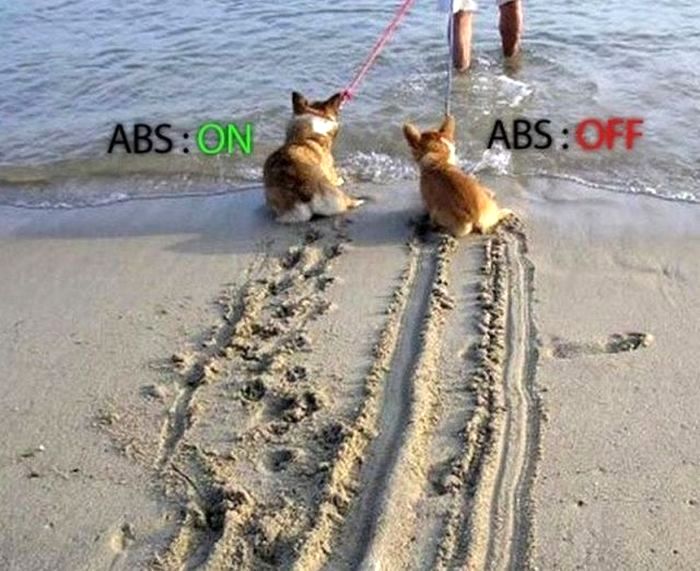Defensive Driving Tip #68: Don’t “Pump” ABS Brakes!
We teach in defensive driving class that ABS brakes have been around awhile, but they have had a “close to zero effect on fatal crashes involvements” (The Long-Term Effects of ABS in Passenger Cars and LTVs, National Highway Safety Administration Report, DOT HS811 182, 2009). The problem is that drivers have not learned what they are and how they work. I was lucky enough a few years ago to get a “guest” slot in a “tactical driving course.” The course teaches police officers how to maneuver, control, brake, corner, back up, etc., without losing control. Having taken the course, I think it teaches very well what cars can and cannot do. I learned that high performance driving takes PRACTICE, and lots of it. Most of us don’t get the chance to practice the skills required to drive at the maximum capabilities of our machines. This is why ABS brakes are so important.
The Next thing we teach in defensive driving class is Emergency braking with non-ABS brakes requires a sensitive touch on the brake pedal, using a technique called “threshold braking.” Threshold braking is what most of us would call “pumping the brakes.” But that’s not really what it is. Awkwardly pumping the brakes with no “feel” for what the wheels and brakes are doing is counterproductive in a situation where maximum braking effort is needed. Threshold braking means applying brake pressure right up to the point of a skid, backing off just enough to prevent the skid, then constantly adjusting throughout the stop to keep the braking effort right at that point. This is not easy. You have to acquire a “feel” for it, literally. What works one millisecond won’t work the next, and you have to be quick enough on the pedal to stay on the edge of a skid, without actually locking your wheels. Once mastered, the technique will stop you faster than any other way. But it takes practice to master — I slid through the cones about ten times before I could do it. I am Bob, Killer of Cones!
Another thing we teach in defensive driving class is that Threshold braking is what ABS brake systems do FOR you. Computer-controlled sensors at each wheel “feel” when that tire is about to slip, and lessen the brake pressure at that wheel to keep the skid from occurring — hundreds of times a second. You don’t skid, and therefore you don’t lose your ability to steer. This is the important part. In a panic stop with ABS brakes, you can steer around whatever it is you are trying to miss — whether it’s traffic cones or something else, like a car — or a kid. Having tried and practiced threshold braking, and then doing the same exercise in a vehicle with ABS, I can tell you that I will never buy another vehicle without ABS brakes.
Remember this: if you try to pump ABS brakes, they will not work. Pumping ABS brakes defeats the computer’s efforts to sense a wheel skid. If your vehicle has ABS brakes, when you need to stop in a hurry press the brake hard and hold your foot on the pedal no matter what it feels or sounds like. ABS brakes pulsate, they rattle, and they make noise. Do not release the pedal until you no longer need to brake. I suggest you go to an empty parking lot somewhere, and stop hard enough to activate your ABS system. You’ll then know what it feels like before you really have to use it. Doing so might save your life — no exaggeration — or someone else’s. If you get a ticket take our defensive driving course 2passdd.com
